Lumbar Strain
What is a lumbar strain?
Automatic Low back lumbar strain is a type of back pain where the cause is the spine, intervertebral discs, or the around soft tissues. Lumbar strain accounts for 70% of automatic low back pain.
Concentrate on muscular lumbar back sprain ie stretch damage or tear of paraspinal forces and tendons in the low back (much of the details of lumbar strain are concluded from peripheral muscle strains).
In strains, the muscle is subjected to an extreme tensile force leading to the overstraining of the myofibres and therefore to their break near the myotendinous junction. Acute mechanical back strains may be activated by physical or non-physical activity, with lifting being the most generally recognized event. However, one-third of patients may not necessarily recollect an incendiary incident.
Clinically Relevant Anatomy
The lumbar spine consists of a special combination of 5 strong vertebrae; multiple bony parts connected by joint capsules; flexible ligaments/tendons; large muscles; highly susceptible nerves. It is created to be quite strong, protecting the highly sensitive spinal cord and spinal nerve roots. At the same time, it is highly flexible, supplying mobility in many various planes including flexion, extension, side bending, and rotation.
Lumbar strain can arise in the subsequent muscles:
- M. erector spinae (M. iliocostales, M longissimus, M. spinalis)
- M semispinalis
- Mm, multifidi
- Mm rotatores
- M. quadratus lumborum
- M. serratus poster
Epidemiology
More than 80% of people will suffer from low back pain during their lifetime. The transnational point majority of low back pain is 12 to 33%. Actual numbers about the international frequency of low back damages are not known.
In the United States, 7-13% of all sports damages in intercollegiate athletes are low back injuries. The most expected back injuries are muscle strains (60%) and disc injuries (7%).
In France over 50% of French people aged 30-64 years had undergone at least 1 day of LBP over the prior 12 months. 17% had suffered LBP for more than 30 days in the same 12-month time.
In an African study, the mean LBP point majority among adults was 32%, with an average 1-year majority of 50% and an intermediate lifetime prevalence of 62%.
What causes lumbar strain?
Injury can impair the tendons and muscles in the lower back. Pushing and pulling sports, such as significant lifting or football, can lead to a lumbar strain. In addition, sports that need sudden twisting of the lower back, such as tennis, basketball, baseball, and golf, can conduct to this injury. Certain risk factors, such as extreme lower back curvature, forward-tilted pelvis, weak back, or abdominal muscles, and tight hamstrings, can improve the risk of this injury.
Many lower back strains happen during everyday movements, such as while exercising or at work.
Common causes of—and risk factors for—low back muscle strain have:
- Heavy lifting: Strain from heavy lifting, bending the spine, lifting from the ground, or an item overhead is a common cause of low back strain. Safe lifting techniques include tactics such as keeping the item close to the chest and avoiding turning the upper body while lifting.
- Sudden effect: The impact from jarring movements can place heavy, direct stress on the low back muscles. For example, high-impact sports such as football and lacrosse place extreme pressure on joints and muscles. The sudden result of a car accident or a fall is another typical contributor to back muscle injury. Deconditioned, stiff muscles are more prone to this type of injury.
- Repetitive motions: Stressful, repeated motions can cause muscles to pull or tear. Sports such as rowing, golf, or baseball may generate chronic strain due to repeated, forceful movements. Chronic strain may slowly become painful over time, or pain can unexpectedly worsen if a muscle is already irritated and then put under extreme stress.
- Poor posture, weak abdominal or back muscles. When low back and core abdominal muscles are weak, the lower back becomes more sensitive to injury. Slouching forward puts added strain on the low back muscles and the spine. Similarly, tight hamstring muscle position counted strain on the lower back over time.
Taking on a new activity: Initiating a new sport or movement may cause muscle strain by putting impulsive, unfamiliar stress on a muscle or group of muscles.
The above list is not exhaustive—rather, it highlights some of the more common problems that lead to a pulled-back muscle.
Several additional factors improve the risk of muscle strain, such as smoking (or any type of nicotine intake), stiffness or restricted range of movement in the back, and obesity.
Strains are described as tears (partial or whole) of the muscle-tendon branch:
- Muscle strains and tears most repeatedly result from a forceful muscular contraction during an overly forceful muscular stretch from lifting heavy things or sudden bending motions.
- Any posterior spinal muscle and its associated tendon can be involved, although the most sensitive muscles are those that span several joints.
- Acute and chronic lumbar strain pain representation: Acute pain is most severe 24 to 48 hours after injury. Chronic strains are indicated by continued pain attributable to muscle damage.
What are the symptoms of lumbar strain?
The following are the considerably common symptoms of a lumbar strain. However, each person may participate in symptoms differently. Symptoms may include:
- Impulsive lower back pain
- Spasms in the lower back that result in more extreme pain
- Lower back feels painful to the touch
- The symptoms of a lumbar strain may correspond to other conditions and medical problems. Always speak with your healthcare provider for a diagnosis.
People with a torn lower back muscle may participate in one or more of the following:
- Discomfort ranges from mild pain to sudden debilitating pain.
- A localized pain in the lower back (does not release into the leg, as in sciatica).
- Sudden onset of pain; pain may be attended by muscle spasms.
- Difficulty standing or walking, with some comfort from pain when relaxing.
- Intense pain may resolve fast, with intermittent flare-ups or low-level pain lasting for a few weeks or months.
Dull, achy low back pain: Strained muscles generally feel sore, tight, or achy. Pain that feels hot, tingling, or electric is more likely generated by an uncomfortable nerve root, not a pulled muscle.
Intensified pain with movement: Low back strain generally degenerates with specific movements that activate the involved muscles. For example, there may be a flare-up of pain when getting up from an established position, when flexing forward, or when first getting out of bed in the light.
Pain that is localized in the low back. Pain is generally concentrated in the lower back. It may also be felt in the buttocks and/or hips, as these muscles help support the low back. Infrequently pain travels down the legs and into the calves and feet, as in cases of sciatica.
Acute mechanical back strains may be initiated by physical or non-physical activity, with lifting being the most generally recalled event. However, one-third of patients may not necessarily remember an inflammatory incident.
The clinical presentation contains pain in the lumbar muscles or nonspecific pain.
The pain could be aggravated during standing and contorting motions, with active contractions and inactive stretching of the involved muscle increasing the pain.
Other symptoms are point tenderness, muscle spasm, possible swelling in and around the involved musculature, a possible lateral variation in the spine with severe spasm, and a reduced range of motion.
Diagnosis of Lumbar strain
In the lack of Red Flags, no laboratory or radiographic studies are required to diagnose or manage mechanical back strains in the acute stage.
Inflammatory biomarkers, eg erythrocyte sedimentation rate (ESR) and C-reactive protein (CRP), are helpful for risk stratification of patients with risk elements for spreading spinal pathology or malignancy but have no neurologic deficiencies on examination.
Regular imaging for mechanical back strains is not suggested, as many may have unexpected abnormal findings that are irrelevant to their pain.
More developed imaging is needed in trauma, failure of conservative management, worsening of symptoms, and new neurologic deficiencies. Plain radiographs and computed tomography are helpful when imagining fractures.
In addition to an entire medical history and physical exam, diagnostic techniques for low back pain may contain the following.
However, during many initial reviews and exams, specialized tests aren’t generally suggested.
X-ray. A diagnostic test that creates images of internal tissues, bones, and organs onto film.
Computed tomography scan (also called a CT scan). This is an imaging test that uses X-rays and a computer to make precise images of the body. A CT scan shows elements of the bones, muscles, fat, and organs. A CT scan shows exact images of bones, muscles, fat, and organs.
Magnetic resonance imaging (MRI). A diagnostic method that uses a combination of enormous magnets, radio frequencies, and a computer to produce detailed images of organs and structures within the body.
Radionuclide bone scan. A nuclear imaging procedure utilizes a very small amount of radioactive material, which is injected into the bloodstream to be caught by a scanner. This test shows blood flow to the bone and cell movement within the bone.
Electromyogram (EMG). A test to consider nerve and muscle function.
Differential Diagnosis
- Lumbar Spondylosis
- Lumbar Spondylolisthesis
- Ankylosing spondylitis
- Compression fracture
- Disc herniation
- Spinal stenosis
Treatment of Lumbar strain
Medical Treatment
Treatment of mechanical back strains relies on the chronicity of symptoms, the patient’s comorbidities, and the distinctive etiology.
Acetaminophen or aspirin—These drugs may be used to reduce mild pain, generally with few side results.
Nonsteroidal anti-inflammatory medication (NSAIDs)—Drugs such as ibuprofen or naproxen may help reduce pain, inflammation, and swelling. Most individuals are familiar with nonprescription NSAIDs such as aspirin and ibuprofen, nevertheless, whether using over-the-counter or prescription power, they must be carried out carefully. Using these medicines for more than one month should be examined by your primary care physician. If you create acid reflux or stomach pains while accepting an anti-inflammatory. If you have serious contraindications to NSAIDs or your pain is not well-controlled, other types of pain medication can be viewed, depending on your specific problem.
Narcotic pain medications—These drugs are rarely suggested for low back pain.
First-line nonpharmacologic therapy:
Acute low back pain contains spinal manipulation, acupuncture, massage, and superficial heat application, while first-line pharmacologic treatment for acute low back pain is nonsteroidal anti-inflammatory medicines and muscle relaxants.
For chronic low back pain, non-pharmacologic techniques were suggested as the first-line agents, including exercise, tai-chi, yoga, multidisciplinary rehabilitation, spinal manipulation, acupuncture, psychotherapy, low-level laser therapy, and electromyogram biofeedback. Nonsteroidal anti-inflammatory drugs were also the first-line pharmacologic representatives recommended, followed by tramadol and duloxetine as the second-line therapies. Suggestions for opioid therapy are only if the earlier mentioned treatments failed and based on an individualized decision to determine if the use overpowers the risk.
Nonsurgical Treatment
Treatment for a lumbar strain generally implicates: limiting the activity that generated the injury (heavy lifting, twisting, bending, or other actions); using ice for the first 48 hours, and applying heat, after; anti-inflammatory medications (NSAIDs) and medications to reduce muscle spasms. Although an initial period of rest may be required, prolonged periods of inaction or bedrest are not recommended and may slow recovery. Physiotherapy and exercises to strengthen back muscles may also be specified. Surgical treatment is only demonstrated in rare events when a complete tear of the ligaments or muscles has happened.
Other nonsurgical treatment suggestions may include electrical stimulation, moist heat therapy, and trigger point injections. For patients with no symptoms of nerve aggravation, spinal manipulation for up to one month has been found useful. Use back conservation techniques and support machines as required to avoid forthcoming injury.
Physiotherapy Treatment
Stretching exercises at the workplace, proper rest breaks, and ergonomic modifications. Ergonomic changes refer to adaptations in the work environment to relieve the physical stress of the employees.
Educating patients about the importance of keeping proper posture and correct lifting procedures may aid in prevention. Routine physical activity
Smoking termination
Weight loss for obese patients
Continuing normal physical activity (recent investigations have found that restarting ordinary activities within the limitations allowed by the pain leads to more quick recovery than bed rest)
If any of the following occur, contact the healthcare provider:
- You’re incapable to stand or walk.
- You have a temperature over 101.0°F (38.3°C)
- You have regular, painful, or bloody urination.
- You have intense abdominal pain.
- You have sharp, penetrating pain.
- Your pain is continuous.
- You have pain or numbness in your leg.
- You feel pain in a unique area of your back.
- You detect that the pain isn’t declining after more than a week.
Contact your healthcare provider instantly for the following:
Pain releasing down the leg
Pain that is attended by fever, weakness in the leg, or loss of control of the bladder or bowels.
Living with lumbar strain
Cold decreases swelling. Both cold and heat can relieve pain. Cover your skin by putting a towel between your body and the ice or heat source.
For the first few days, use an ice pack for 15 to 20 minutes.
After the first few days, try to heat it for 15 minutes at a time to reduce the pain. Never rest on a heating pad.
Over-the-counter medicines can help manage pain and swelling. Try aspirin or ibuprofen.
Techniques
Ice and heat—The application of ice or some type of cold pack instantly following the damage can help reduce inflammation. After 48 hours, your physician may suggest the application of heat to the lower back as a longer-term therapy for promoting blood flow and healing in the damaged area. The proper way to ice an injury is to apply oppressed ice directly to the injured area, but over a thin cloth. Ice should not be applied instantly to the skin and should be used for no more than 15 to 20 minutes at a time, remaining at least one hour between icing sessions. Chemical cold effects (“blue” ice) should not be placed straight on the skin and are not as useful.
TENS and Ultrasound: TENS and ultrasound are usually used to help manage pain and reduce muscle spasms.
Chiropractic or manipulation therapy—Gentle manual manipulation takes a variety of conditions and is commonly a safe option to help loosen tight back muscles, supply comfort from pain, and promote healing in the lower back. However, special care should be taken if a patient has osteoporosis or a disk herniation because in these cases, manipulation of the spine can exacerbate symptoms or even cause other damages.
Soft Tissue Manipulation: Soft tissue manipulation was found to reduce pain and improve ROM.
Massage—By promoting blood flow in the lower back, massage can promote healing, as well as help, relieve tight lower back muscles and release endorphins, which act as the body’s natural analgesics.
Strengthening Exercises: Progression of strengthening exercises should start once the pain and spasm are under management. The muscles needing the most power are the abdominals, especially the obliques, the trunk extensors, and the gluteals. Placing all of the focus on rehabilitation, especially on the injured muscle is not beneficial. Movement core stability is an important part of the treatment of a lumbar strain and for the further precluding of low back pain.
As with all spinal injuries, posture and body technicians should be evaluated and updated as needed.
Exercises
Exercise can help your back heal. It also permits your back to get stronger and more relaxed, preventing any reinjury. Ask your healthcare provider about detailed exercises for your back. Never start exercise without consultation, it will increase your pain. All exercise must be pain-free.

Cat and cow pose
Lie on all fours and hold your back straight. Then, flex your spine exterior and upward toward the ceiling. Hold this pose till you feel a stretch in your neck, then bend your back inward and below till you feel a stretch in your lower back. Duplicate this about ten times.
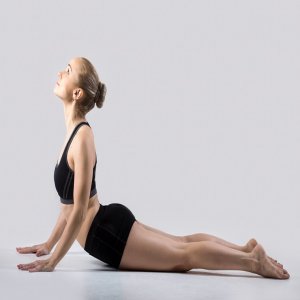
Cobra stretch
Lie in the prone work and keep your hands on either side of your chest. Keep your feet produced firmly on the floor and press into your hands as you push your upper body, from your chest to your head, upward. Maintain this pose for a few seconds and then gently lower yourself.
Prone leg lifts
This is equal to the cobra stretch, but instead of lifting your upper body, you keep it planted firmly down. Maintaining your legs stretched out and close together, extend them in one steady movement as much as you can, keep the pose, and lower your legs back to the floor.
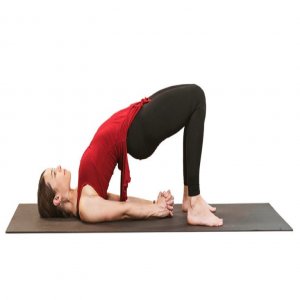
Bridges
Bridges are especially helpful if you want to strengthen your lower back. To perform a bridge perfectly, lie down on your back and rest your outstretched arms by your side. Lift your hips off the floor, supporting your body from the head to the knees in a linear line. Hold and lower.
Leg stretches
Lie on your back with your knees extended upward and your feet flat on the floor. Raise your right foot, loop a round or a towel around it, and gently pull your foot toward your chest, maintaining your right leg straight and directly till you feel a stretch in your hamstrings.
Side twists
This is a significant stretch to complete when you’re suffering from lower and side back aches. Lie on your back with arms extended out by your side. Flex your knees to one side while turning your body in the opposing direction. Repeat this wringing movement on the other side.

Bird-dog stretch
This exercise focuses on stretching out the muscles attached to your lower back, thus reducing stress and pain. Lie on your fours, and raise your left leg, stretching it back. Simultaneously, stretch your right arm forward in one straight line. Repeat on per side.
Toe-touches
Toe touches are perfect for days when your lower back requires a good stretch. Stand up directly with your arms stretched overhead, bend a little backward till you feel a push in your lower back, and then lean forward and down to touch your toes. Repeat slowly 10 times.

Child’s pose
No further exercise opens up your lower back like the child’s posture. It’s effortless to perform as well; all you require to do is kneel on a mat, sit on your heels, and lean forward with your arms outstretched before you. Relax your head on the floor and enjoy the comfort that follows.

Hip stretches
Hip stretches are as useful for the lower back as they are for the hips. To extend your hips, kneel on your left knee and put your right foot forward, with the right knee bent. Maintain your left foot and gently drag it upward. Repeat on the different side.
Knee to Chest
Laying on your back, gently drag your knees to your chest, keeping for a second, then stretching your arms back out straight. Hold for 20 seconds then repeat it 5 repetitions, and perform 3 times per day.
Trunk rotation
The trunk rotation needs you to lie level on the ground to twist your knees together and extend your arms out. Bending only your hips, bend your twisted knees to one side until your right knee touches the ground. Maintain for 10 seconds and rotate your knees to one side.
Extensions
Sometimes lying opposite from the back can assist stretch out necessary muscles in the lower regen. An extension stretch can be accomplished by laying on your stomach, gently pushing, and extending your lower back. Don’t maintain this position, and rather do the movement 10 times, for 3 sets, 3 times per day.
Lower back rotation
Rotating and stimulating blood flow is a significant way to assist an immediate area on the back. A lower back rotation can be done by folding one foot behind the other knee. Once done, gently pull the leg across and maintain the stretch for 20 seconds. Repeat the rotation 5 times for each leg, and do it 3 times a day. If the pain continues or worsens, try lowering the amount of exercise.

Piriformis Stretches
This is a strong stretch for your backside, place your leg across over onto your different thigh in a formation four shape, and gently drop your buttock to the ground. Maintain for 20 seconds. Repeat 5 times each leg.
Hamstring Stretches
Lie on your back, with one leg flexed and one leg in the air with a stretch band near your foot. Maintain for 30 seconds, repeat it on both legs 5 times.
Pelvic Lift
The multifidus muscle is one of the most significant muscles to believe in when treating back pain. This is a small back muscle that drives from vertebra to vertebra. It is necessary to protect your vertebra from gliding forward about other moving vertebrae and gravity.
The pelvic lift conditions the multifidus muscle to react faster.
First, you lie down on your back and flex your knees. Then cross your arms over your chest to decrease the balance that affects the exercise’s significance.
Finally, you lift your pelvis towards the ceiling and keep it there for 10 seconds. Repeat this twice a day in sets of 10.
Leg Slides
Your core is made of the axial skeleton and muscles near your spinal column. This is one of the best exercises to maintain your lower back and core.
First, you lie down facing up. Place your hands on your hip bones and find an impartial spine. Hold your feet firmly on the ground while you flex your knees.
Bend your abdominal muscles and exhale as you raise your right leg and move your heel on the floor. Then return to your starting position.
6 to 8 repetitions of this exercise on each leg.

Hip Bridge
The hip bridge exercise strengthens your posterior muscles in the back, hips, and legs.
First, lie on the floor with your arms stretched. Flex your knees while keeping your feet firmly on the floor.
While maintaining your shoulder blades straight and fixed to the ground, lift your hips. Maintain your pelvis like this for 20 to 30 seconds.
Upper-Body Lifts
Upper-body lifts prepare the large muscles in your back to allow you to stand for long periods.
First, lay on your stomach. Place your arms behind your head as you lift your upper body. (That involves your arms.)
Keep your feet on the floor while doing this exercise. Repeat this exercise 10 times. Try to improve your count to 15 or 20 and do 3 sets with more training.
Do this exercise at least double daily: once in the morning and once at night.
Bend Over
The more you fear flexing over, the more impaired your back pain will be. You must flex your back in a way that supports it straight and covered.
First, you start by flexing your neck and chest. Then you flex further down. Maintain your lower back turned as you reach for your toes.
Lift your body without utilizing your hands. This will strengthen your core and support you get used to flexing.
It’s alright to feel a time of tension in your lower back muscles as you flex.
Walking
Low-impact aerobics can help people with back pain support and prepare their muscles. Walking can enhance different aspects of your health, involving your back.
The walking you do for duties, work, and chores won’t be enough. You require to get in 20 to 30 minutes of non-stop walking to reap the cardio advantages.
If walking sounds boring to you, hear to some music. This supports the time going a little bit quicker while you’re walking.

Partial Crunches
Strengthen your back and abdomen muscles with partial crunches. This exercise is considered particularly safe for people with back pain.
First, you lay down with your knees flexed and feet facedown on the floor. You can either cross your arms behind your back or across your chest. Then you tighten your abdomen muscles and exhale as you lift your shoulders off the ground.
Maintain the position for a second, then lower yourself down. Do 8 to 12 repetation. Do not lead with your elbows or use your arms’ ability to compensate.
Wall Sits
Wall sits are another secure exercise people with back pain can smoothly do.
Begin by standing 10 to 12 inches from the wall. Then bend back until your back is facedown and straight up against the wall.
Slowly slide down the wall until your knees are flexed. Your back should stay pressed against the wall. Your position should look like you’re sitting in a hidden chair.
Maintain this position for 10 seconds, then slide back up the wall into a standing position. Repeat it 8 to 12 times.
Recovery and Outcome
Back muscle strains generally heal with time, many within a few days, and most within 3 to 4 weeks. Most patients with mild or moderate lumbar strains make full healing and are free of signs within days, weeks, or possibly months. However, it is important to recognize that continuing activity levels too fast may cause re-injury, which can be more powerful than the initial injury and may result in frequent or chronic pain.
Prevention of Lumbar strain
Here are some suggestions to help you avoid low back strain:
- If you feel any low back pain during physical exercise, stop.
- If you feel low back pain within a day of stepping up your training, take it comfortably for a few days.
- Get your back in form. Exercise and stretch your back muscles regularly.
- Avoid sleeping on your abdomen. Sleep on your back or your side, and wedge a pillow under or underneath your legs.
- When selecting something heavy, flex at the knees, not at the waistline.
- Lose importance if you are overweight.
- Assume good posture. Sit directly in chairs, with your back against the chair’s back.
Although some low back muscles obtain acceptable exercise during daily movements, many do not. These manage to weaken with age unless particularly targeted. Naturally, those who exercise regularly and stretch back muscles are slightly likely to suffer from low back pain due to strains, sprains, tears, or spasms.
To control or lessen the effect of any problems, it is necessary to exercise regularly and connect walking, swimming, or other movements with a spine exercise program, low back exercises, or detailed exercises to stretch and strengthen back and abdominal muscles. A complete exercise regimen for the low back may contain: stretching for back pain relief, back-maintaining exercises, and low-impact aerobic exercise. Recurring stretching of the hamstring (the muscle running through the back of the thigh) will also help relieve and control back muscle tightness and injury. Tightness in the hamstring limits movement in the pelvis, which can pull the lower back. By slowly lengthening these muscles, frequent hamstring stretching can relieve stress in the lower back.
FAQ
How long does lumbar strain take to heal?
More than 90% of patients recover from an episode of lumbar muscle strain or sprain within one month. Heat and ice treatment are advised on an as-needed foundation at home to treat impulsive flare-ups of low back pain, along with anti-inflammatory medicines.
How do you sleep with a lumbar strain?
The best sleeping position for lower back pain is on your side with a partial flex in the knees. Maintaining the knees bent helps balance the body and relieves pressure on the lumbar spine. Many people find it valuable to put a small pillow between their knees to make this place more inhabitable.
How painful is a lumbar sprain?
Sprains and strains usually cause a broad, painful pain across the lower back. The pain may be restricted to one side or the other. You may have a problem flexing your back or standing up fully straight. You may also have periodic muscle spasms, specifically when moving around or while sleeping.
How long should lumbar pain last?
Acute, or short-term back pain survives a few days to a few weeks. Most low back pain is acute. It tends to determine on its own within a few days with self-care and there is no residual loss of position. In some cases, a few months are needed for the signs to disappear.
Where do you feel lumbar pain?
The low back also called the lumbar area, is the location of the back that starts below the ribcage. Almost everyone has low back pain at some significance in life.

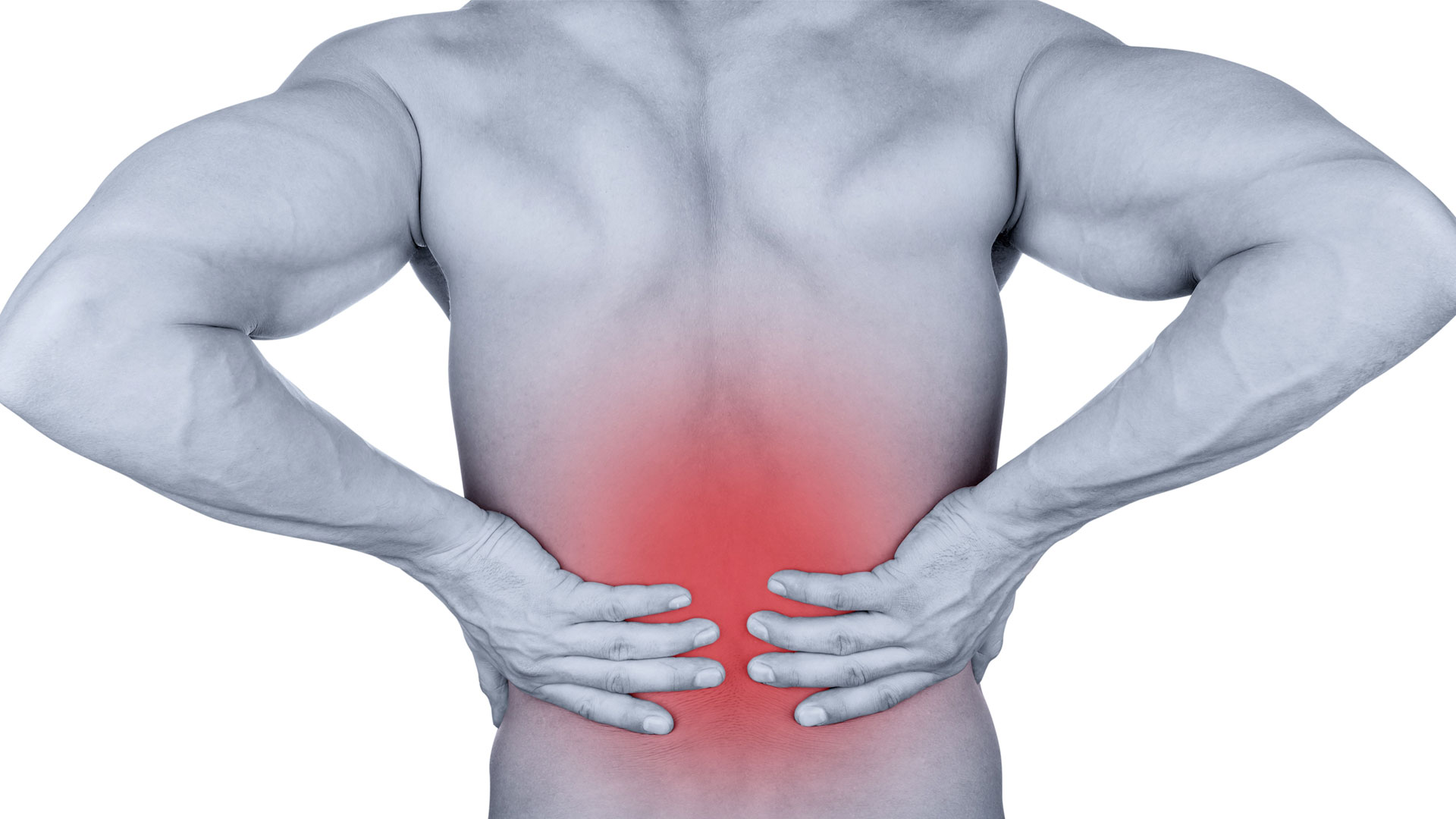
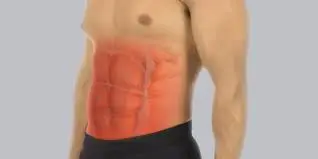

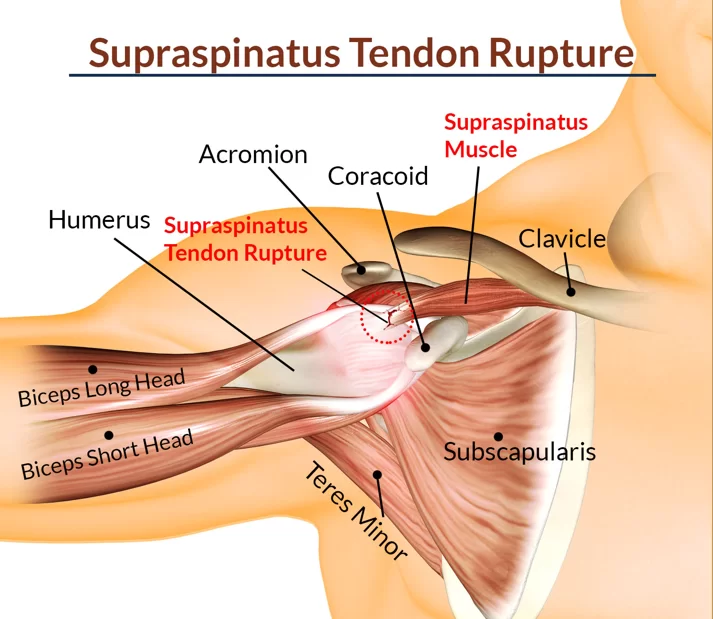
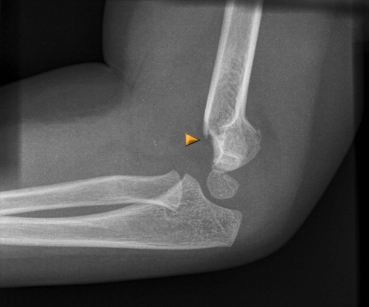


3 Comments